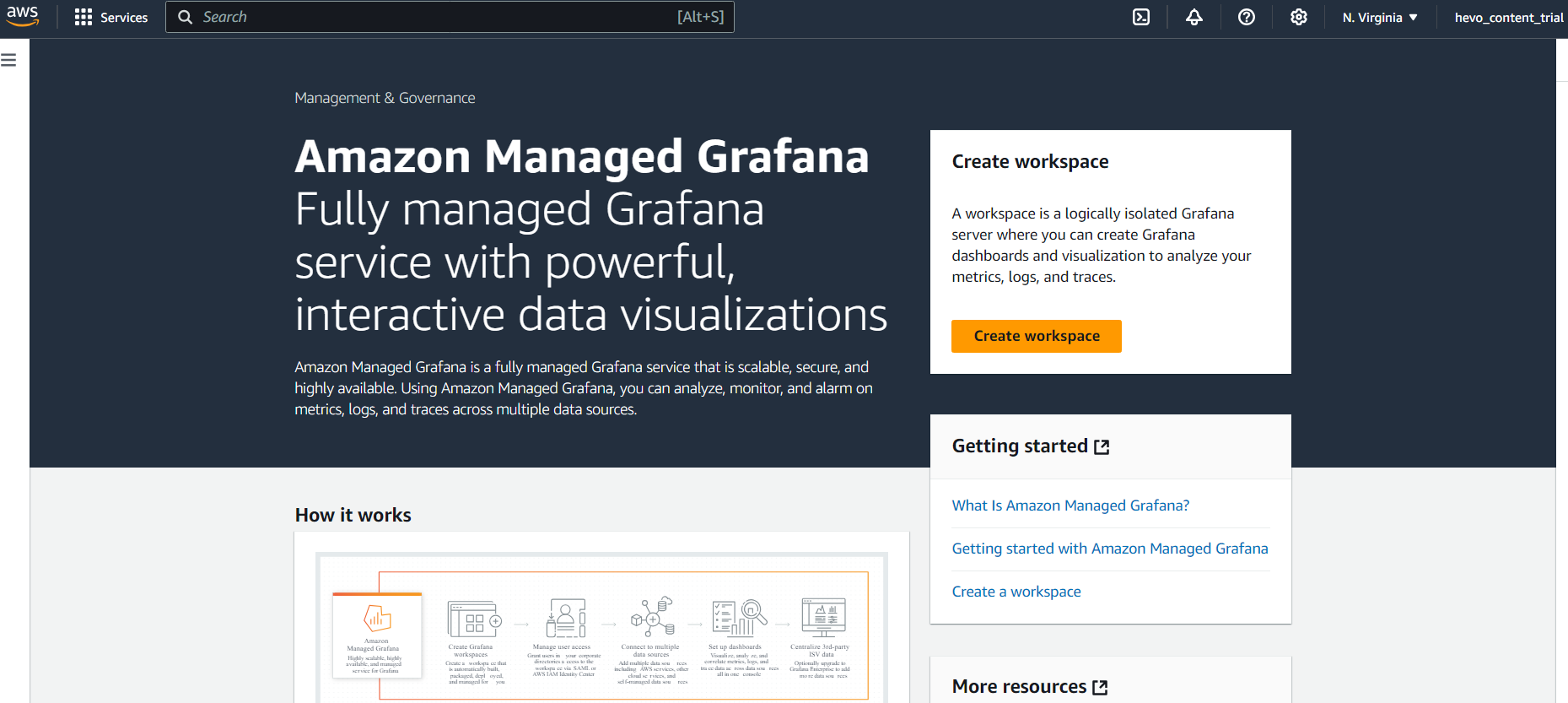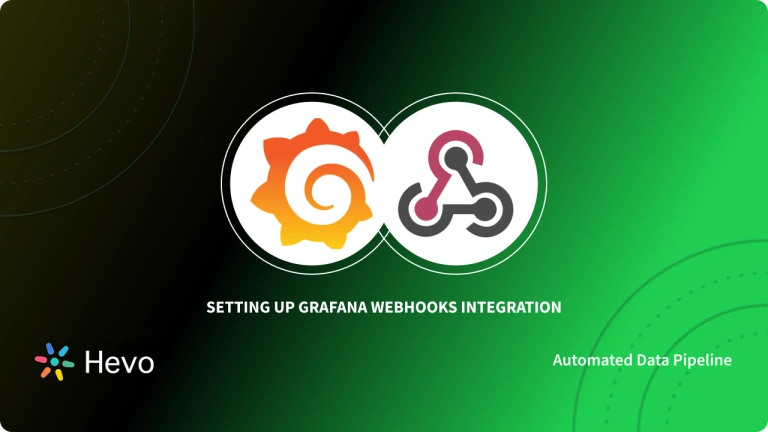Businesses are collecting data at a staggering rate and it is essential to unify this data and analyze it to understand it and get some useful information out of it. Companies use Data Visualization tools to visualize huge volumes of data and generate insights from it. Grafana is an open-source Analytics and Visualization platform that help companies analyze their data.
Amazon Redshift is a Cloud Data Warehouse service that stores business data in a Columnar Storage format for faster query speed. Grafana Redshift Integration allows users to use business data stored in Amazon Redshift and feed it to Grafana dashboards to keep track of business activities.
Grafana Redshift Integration enables companies to visualize huge volumes of real-time data and keep track of time-series data. In this article, you will learn about the steps to set up Grafana Redshift Integration. You will also read about the benefits of using Grafana Redshift Integration and how it helps businesses visualize data.
Table of Contents
What is Grafana?
Grafana is an open-source multi-platform tool for Data Visualization and Data Analytics. It offers a web application that allows users to analyze their business data and generate interactive insights. Grafana comes with many provides charts, graphs, and alerts that allow users to keep track of small updates in data. With the help of KPIs (Key Performance Indicators), users can create interactive dashboards and monitor business activities.
As Grafana is an open-source platform, it allows users to build plugins that can easily connect to data sources and consume data to Grafana for visualizing, interpreting, and querying. It helps the user analyze and monitor data over time and performs time-series analytics on the data.
Key Features of Grafana
Some of the main features of Grafana are listed below:
- Visualization: Grafana comes with lots of Data Visualization options such as graphs, histograms, etc. visualize your business data.
- Collaborative Sharing: Grafna allows users easily share dashboards with other users to collaborate.
- Alerts and Notifications: With the help of Grafana alerts, users can stay updated with data changes. Users can easily create notification alerts and send them to Slack, PagerDuty, SMS, E-Mail, and many more.
- Templates: Grafana provides a plethora of pre-built dashboard templates and users can also create their own templates.
Hevo Data, a No-code Data Pipeline helps to load data from any data source such as Databases, SaaS applications, Cloud Storage, SDKs,s, and Streaming Services and simplifies the ETL process. It supports 150+ data sources and is a 3-step process just selecting the data source, providing valid credentials, and choosing the destination.
Check out why Hevo is the Best:
- Secure & Reliable: Hevo’s fault-tolerant architecture ensures secure, consistent data handling with zero loss, and automatic schema management.
- User-Friendly & Scalable: Hevo’s simple UI makes it easy for new users, while its horizontal scaling manages growing data volumes with minimal latency.
- Efficient Data Transfer: Hevo supports real-time, incremental data loads, optimizing bandwidth usage for both ends.
- Live Monitoring & Support: Hevo provides live data flow monitoring and 24/5 customer support via chat, email, and calls.
What is Amazon Redshift?
Amazon Redshift is a Cloud Data Warehouse offered by Amazon Web Services (AWS) that allows users to store and analyze their business data. It is a storage device that holds data and delivers high performance in querying. Amazon Redshift is a fully managed Data Warehouse solution that can easily handle petabytes of data and perform real-time analysis to generate insights.
Amazon Redshift is column-oriented and stores the data in a columnar format compared to traditional Databases stored in a row format.
Key Features of Amazon Redshift
Some of the main features of Amazon Redshift are listed below:
- Massively Parallel Processing: Amazon Redshift uses MPP to deliver high performance. It distributes tasks or data into multiple nodes and performs the same operations distributing compute.
- Data Sharing: Amazon Redshift allow users to save cost and improve performance by data sharing from single cluster to multi-cluster.
- Fault-Tolerant: Amazon Redshift continuously monitors the health of the cluster. It automatically replicates data regularly to avoid any data loss at the time of disaster.
- End-to-End Encryption: Amazon Redshift ensures data safety and protection with AES-256 Encryption and transfers data over SSL.
How to Set Up Grafana Redshift Integration?
Now that you have understood Grafana and Amazon Redshift. In this section, you will learn about the steps to set up Grafana Redshift Integration.
You can add Amazon Redshift as a data source to Grafana using Amazon Managed Grafana. Grafana Redshift Integration can be done using the AWS data source configuration option in the Grafana workspace console.
It allows users to add Amazon Redshift as a data source by discovering the accounts and managing configurations of the authentication credentials to access Amazon Redshift data. You can use Grafana Redshift Integration to access the self-managed Grafana Server.
For this, you need to access the Amazon Redshift Cluster, so set the GrafanaDataSource: true.
The following steps to set up Grafana Redshift Integration are listed below:
Step 1: Adding Amazon Redshift as a Data Source
- First, ensure that you have the admin or editor user role.
- Then, open the Amazon Managed Grafana Console and select the workspace on which you want to work with Grafana Redshift Integration.

- If you don’t have permission to the workspace, then you can change it using the customer-managed permissions for using service permissions so that valid IAM roles and policies are enabled to use AWS data source configuration in the Grafana workspace console.
- For this, go to the “IAM role” and then choose the “Service managed” option.
- Click on the “Save Changes” button.
- After that switch to the “Data Sources” tab and select the “Service managed” check box and then choose the “Actions, Enable service-managed policy” option.
- Again in the “Data Sources” tab, choose “Configure in Grafana” in the “Amazon Redshift” row.
- Now, if it asks then sign in to your Grafana workspace console.
- In the Grafana workspace console, navigate to the left navigation bar.
- Here, choose the second AWS icon and select the “Redshift” option.
- Now, select the region from where you want to query your Amazon Redshift data source.
- Next, select the accounts that you want and then choose the “Add Data Source” option.
Step 2: Configuring Amazon Redshift
- First, you need to configure the connection detail settings.
- Go to the “Connection Details” menu and there select the authentication provider of your choice. Workspace IAM Role is recommended.
- Then, choose the “Default Region” of the Amazon Redshift that you will use to query data.
- Now, move down to the “Authentication” settings section.
- Here, choose any of the Temporary Credentials or AWS Secrets Manager options as per your authentication or access credential provider.
- If you choose the “Temporary Credentials” tab which is also a default option, then choose the “Cluster Identifier” of the cluster that you have created in Amazon Redshift as shown in the image below.
- Then, choose your target Amazon Redshift database.
- Now, you have to select the user for the target Database.
- Select the Amazon Redshift Database user that you created for the above cluster.
- If you choose the “AWS Secrets Manager” option, then enter the credentials in the input fields as shown in the image below.
- Click on the “Save & Test” button.
That’s it! You have completed the Grafana Redshift Integration.
What are the Benefits of Grafana Redshift Integration?
Amazon Redshift and Grafana are popular platforms. Some of the benefits of using Grafana Redshift Integration are listed below:
- Grafana comes with customizable dashboards and many visualization options. The Grafana Redshift Integration allows users to track application performance and business data by accessing the Grafana dashboard with Amazon Redshift data.
- Grafana Redshift Integration enables users to visualize data stored in Amazon Redshift in numerous formats such as Line Graphs, Bar Graphs, Pie Charts, Histograms, and many more as per the business needs.
- Grafana Redshift Integration allows you to create custom scripts to automate the process of Dashboard creation using the business data in Amazon Redshift.
Conclusion
In this article, you learned about Amazon Redshift, Grafana, and the steps to set up Grafana Redshift Integration. Also, you read about how it allows organizations to visualize their large amount of business data and the benefits of using Grafana Redshift Integration. Grafana is a popular Data Visualization platform that offers interactive dashboards to keep track of real-time business activities. Amazon Redshift is a widely used Data Warehouse that offers high performance.
Amazon Redshift stores data from multiple sources, and every source follows a different schema. Instead of manually writing scripts for every source to perform the ETL (Extract Transform Load) process, one can automate the whole process. Hevo Data is a No-code Data pipeline solution that can help you transfer data from 150+ data sources to Amazon Redshift or another Data Warehouse of your choice. Its fault-tolerant and user-friendly architecture fully automates the process of loading and transforming data to destination without writing a single line of code.
Want to take Hevo for a spin? Explore Hevo’s 14-day free trial and experience the feature-rich Hevo suite firsthand. Also, check out unbeatable pricing and which plan would suit your needs the best!
Share your experience of learning about the Grafana Redshift Integration in the comments section below!
FAQ
1. Can Grafana connect to Redshift?
Yes, Grafana can connect to Amazon Redshift using the PostgreSQL data source since Redshift is based on PostgreSQL.
2. What is Redshift used for?
Amazon Redshift is used for data warehousing, enabling fast query performance and analytics on large datasets.
3. What is the database behind Grafana?
Grafana typically uses SQLite as its default database, but it can also be configured to use MySQL or PostgreSQL for storing dashboards and user data.










